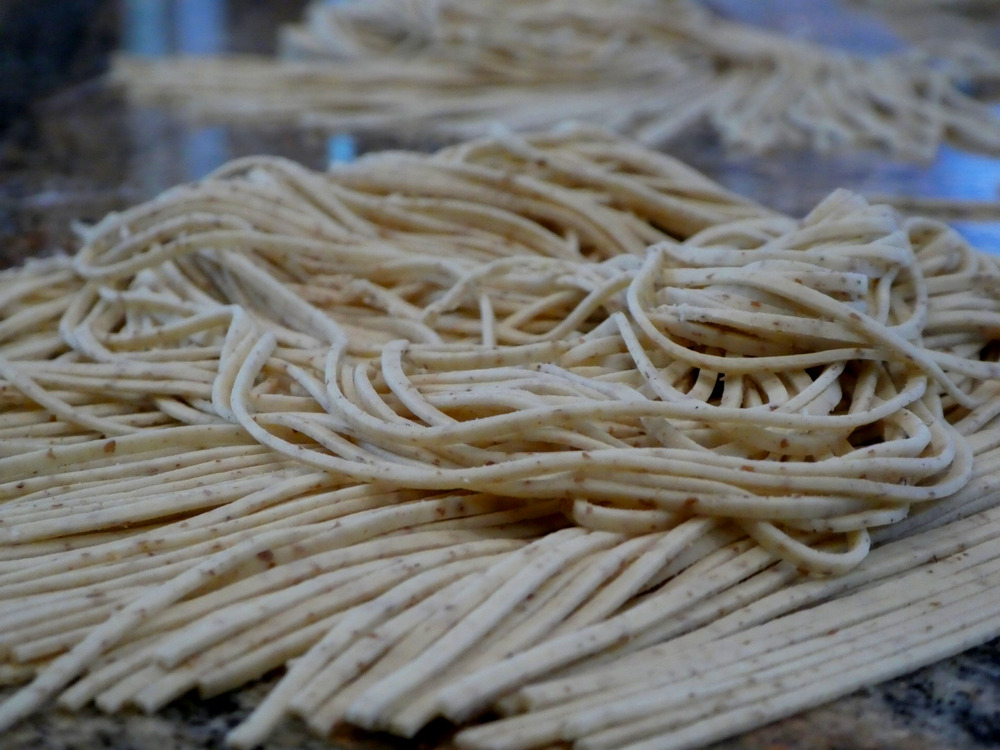
Noodles are just awesome. Italian spaghetti, Vietnamese bowl of Pho, a bowl of spicy Thai curried noodles…they are all awesome. A bowl of Japanese ramen is right up there in the culinary Pantheon of noodles. I’ve had a lot of the stuff and I’ve cooked it at home a few times. I have never made the ramen noodles from scratch though. I’ve always bought them. This time I made the labor intensive and long recipe from Ivan Ramen, the book by Ivan Orkin (well, I did have to make a few concessions when some ingredients where pretty much impossible to find). The noodles are a major component of course and I decided to make them at home this time around.
Ivan uses an interesting and non-traditional mix of flours to make the noodles including rye and some cake flour. Rye is there for flavor and the cake flour for a more supple and tender texture. Before adding the rye I toasted it for about 4 minutes to add an extra layer of flavor. The traditional ramen noodle texture is kind of firm, springy and slippery. It also has a yellow tint (NOT from food coloring). We get that by adding a substance to tilt the mix to be more alkaline. Traditionally a product called Kansui is used. According to this site it’s a mixture of Sodium and Potassium Carbonate.
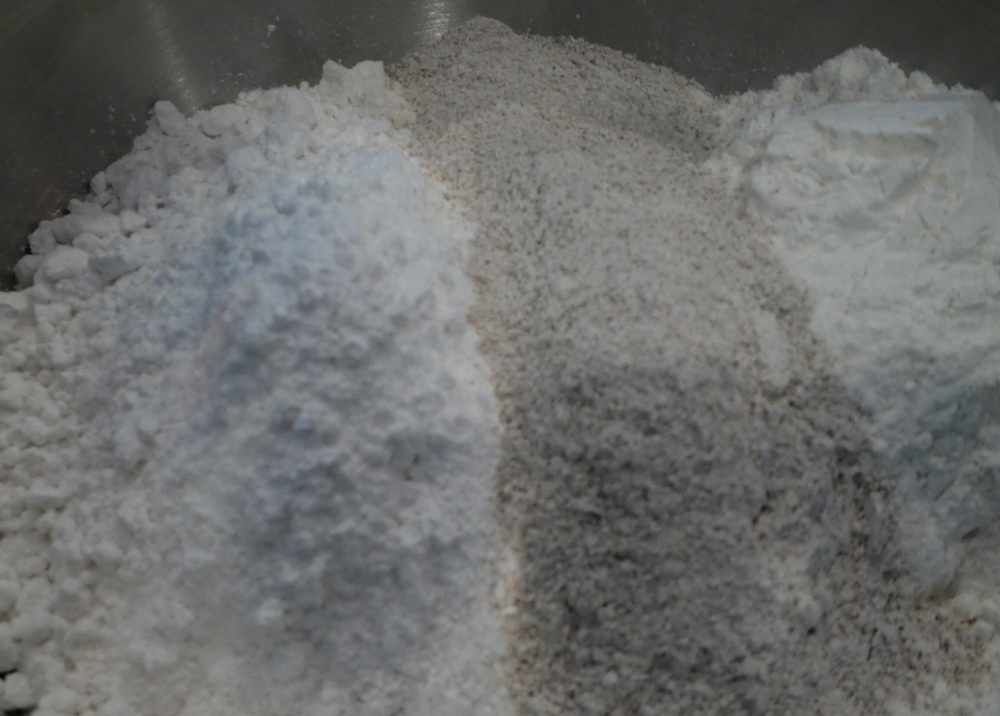
I did not use Kansui. Years ago, Harold McGee published an article in the NY Times about baking some baking soda to make it perform the same job as Kansui. From the article some cool scienc-y talk (I love Mr. McGee and everyone should have his book On Food and Cooking)
“Baking soda is sodium bicarbonate, which already includes one proton and so has a limited ability to take up more. But if you heat baking soda, its molecules react with one another to give off water and carbon dioxide and form solid sodium carbonate, which is proton-free.”
In his book, Ivan also recommends using this technique. So, I baked some baking soda and added that to the mix.
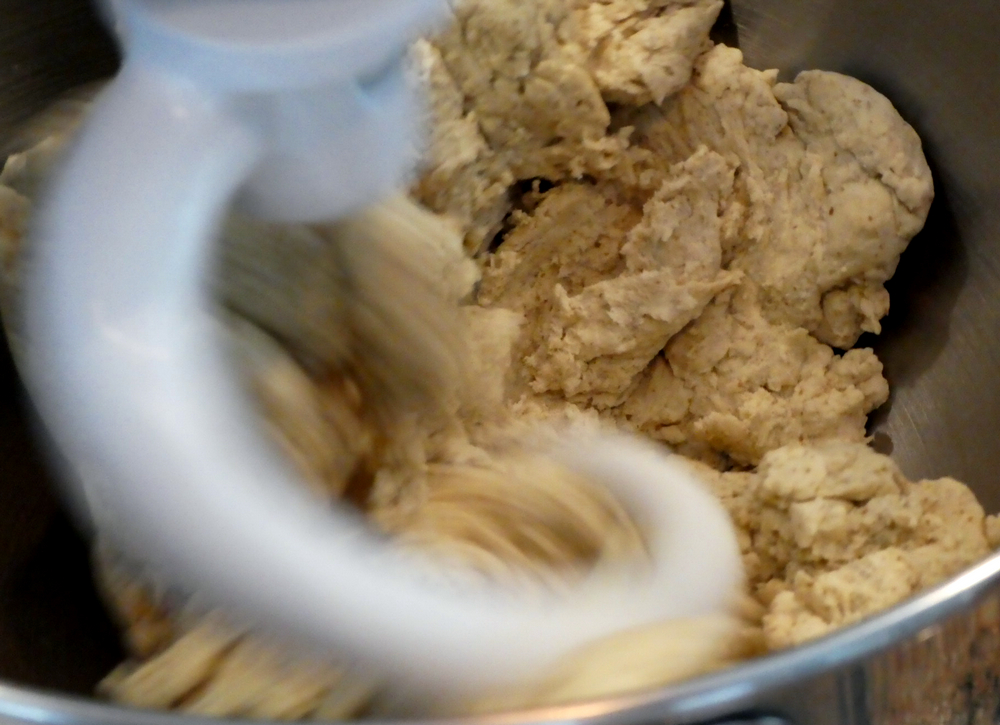
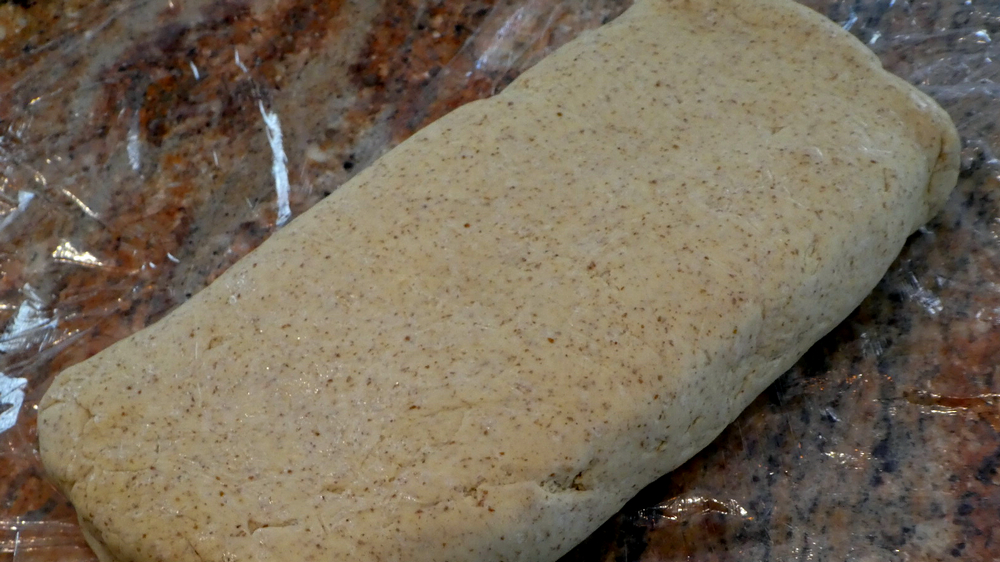
The rest was pretty easy. The flours and liquid plus baked baking soda are mixed for a good bit, about 10 minutes, in the Kitchenaid mixer. Then the dough is allowed to rest and hydrate and soften for 30 minutes. I was concerned that the cake flour will make the noodles too difficult to handle. Indeed, I needed to pass the dough a few more times through the pasta machine’s thickest setting than normal. In the end it came together well and made nice, rye-speckled, alkaline-smelling (in a good way) sheets.
I cut them on the thinnest setting and spread them in a baking pan after tossing them well with corn starch. After our first dinner a few hours later, I stored the remaining noodles in the fridge, covered in plastic wrap, to see how they keep. Again, worked out pretty well. We ate ramen for a few days to follow and the noodles did not stick or turn too brittle. The noodles are delicious. They are slippery but maintained a nice toothsome texture and had a lovely flavor that stood out to all the savory richness of a bowl of ramen. I will be making them again but I might try the Momofuku version next to see how they compare.
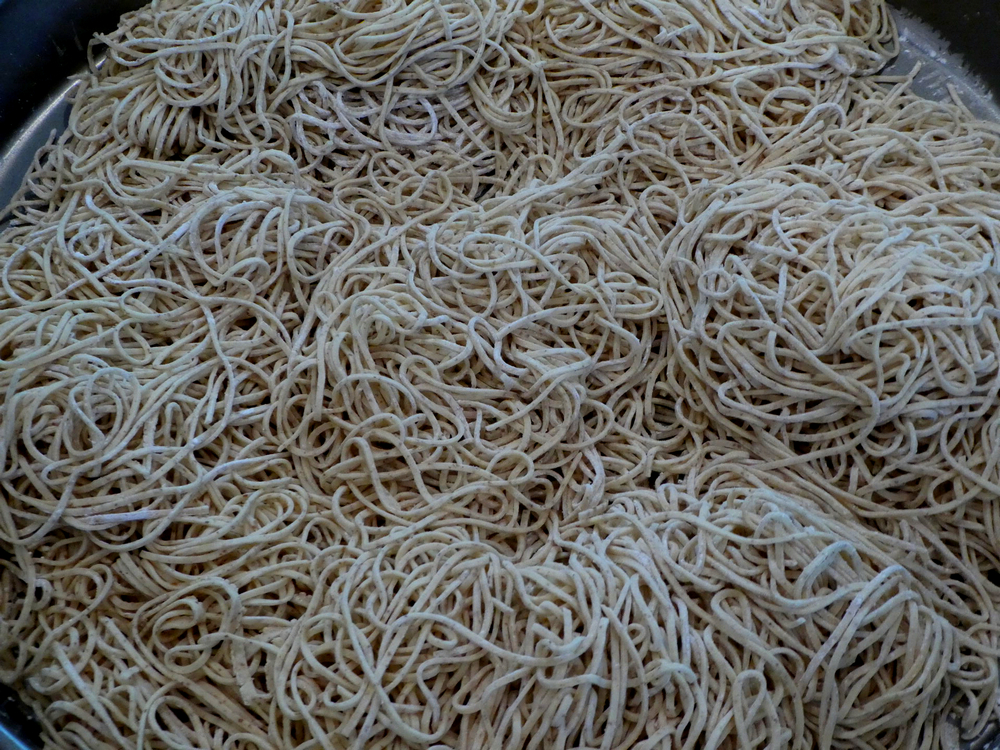

I’ve made ramen before, using regular flour. I’ll have to try baking the baking soda next time. I also love McGee’s books.